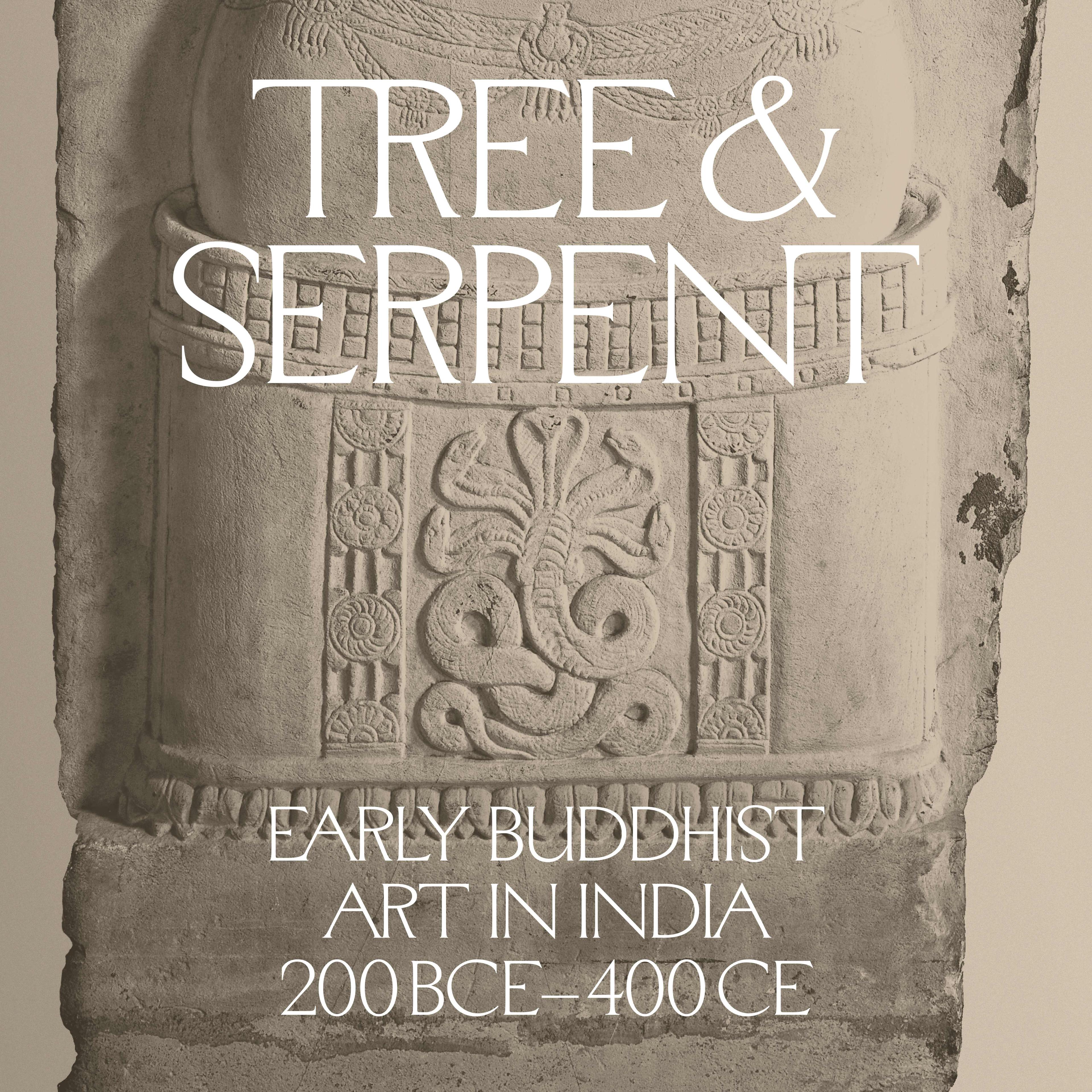This is the story of the origins of Buddhist art. The religious landscape of ancient India was transformed by the teachings of the Buddha, which in turn inspired art devoted to expressing his message. Sublime imagery adorned the most ancient monumental religious structures in ancient India, known as stupas. The stupa not only housed the relics of the Buddha but also honored him through symbolic representations and visual storytelling. Original relics and reliquaries are at the heart of this exhibition, which culminates with the Buddha image itself.
Featuring more than 125 objects dating from 200 BCE to 400 CE, the exhibition presents a series of evocative and interlocking themes to reveal both the pre-Buddhist origins of figurative sculpture in India and the early narrative traditions that were central to this formative moment in early Indian art. With major loans from a dozen lenders across India, as well as from the United Kingdom, Europe, and the United States, it transports visitors into the world of early Buddhist imagery that gave expression to this new religion as it grew from a core set of ethical teachings into one of the world’s great religions. Objects associated with Indo-Roman exchange reveal India’s place in early global trade. The exhibition showcases objects in various media, including limestone sculptures, gold, silver, bronze, rock crystal, and ivory. Highlights include spectacular sculptures from southern India—newly discovered and never before publicly exhibited masterpieces—that add to the world canon of early Buddhist art.
To access the booklet of all large-print exhibition text, click here.
The exhibition is made possible by Reliance Industries Limited, The Robert H. N. Ho Family Foundation Global, and the Fred Eychaner Fund.
Major support is provided by the Estate of Brooke Astor, the Florence and Herbert Irving Fund for Asian Art Exhibitions, and the E. Rhodes and Leona B. Carpenter Foundation.
The symposium is made possible by the Fred Eychaner Fund.
The catalogue is made possible by the Florence and Herbert Irving Fund for Asian Art Publications.
Additional support is provided by Albion Art Co., Ltd.
Audio Guide
Unpack the rich symbols and stories of early Buddhist art.

670. Introduction and Stupa Drum Panel with Naga
NARRATOR: Welcome to Tree & Serpent: Early Buddhist Art in India, 200 BCE to 400 CE. This exhibition showcases rarely seen objects from the Deccan in Southern India, representing the origins of Buddhist art.
JOHN GUY: When Buddhist art appears in India it’s sophisticated, complex, iconographically elaborate, and embedded with great stories, great narratives. It doesn’t come out of nowhere.
NARRATOR: These stories are told through imagery from an incredible sculptural tradition that existed long before the introduction of Buddhism in Southern India. In the grand piece before you, you'll find a multi-headed serpent under the cover of a tree. To help us understand the role of trees and serpents in this particular cultural and religious context is John Guy, Florence and Herbert Irving curator for South and Southeast Asian Art at the Met.
JOHN GUY: This is a large limestone panel which would have decorated the lower section of a Buddhist funerary mound, what’s known as a stupa.
NARRATOR: These stupas contained the Buddha’s relics and his teachings making them central to Buddhist worship. They provided essential space to deploy those teachings through imagery and narrative storytelling.
JOHN GUY: The decoration of the stupa is dominated by two motifs. One is the protective snake, the Naga, which you see coiled, poised, ready to strike in the foreground at the center of the drum.
NARRATOR: The naga was originally known in indigenous nature cults as a protective spirit. Here, the symbolic figure of protection has been captivated and persuaded by Buddhist teachings to become its shield of protection. Above it, we see a tree:
JOHN GUY: Here it appears almost as if it’s a whole canopy of umbrellas. And the reference to the tree takes us straight back to the site of the Bodhi tree, where the Buddha experienced enlightenment. So, we have both elements drawn together in one spectacular piece
NARRATOR: In this audio tour, we’ll unpack the rich symbols and stories that fill this sculptural landscape. You’ll encounter works that reference and appropriate indigenous imagery to help spread the teachings and secure the place of Buddhism in India. Enjoy your tour.
Playlist

Exhibition Tour
Join John Guy, Florence and Herbert Irving Curator of the Arts of South and Southeast Asia in The Met’s Department of Asian Art, and Donald S. Lopez, Arthur E. Link Distinguished University Professor of Buddhist and Tibetan Studies, University of Michigan, for a virtual tour of Tree & Serpent: Early Buddhist Art in India, 200 BCE–400 CE.
Exhibition Objects
Press the down key to skip to the last item.
Exhibition Catalog
Exhibition Catalogue
With new photography of more than 125 rare works of art, this pioneering study provides essential insights into our understanding of ancient Indian art and the origins of Buddhism.


